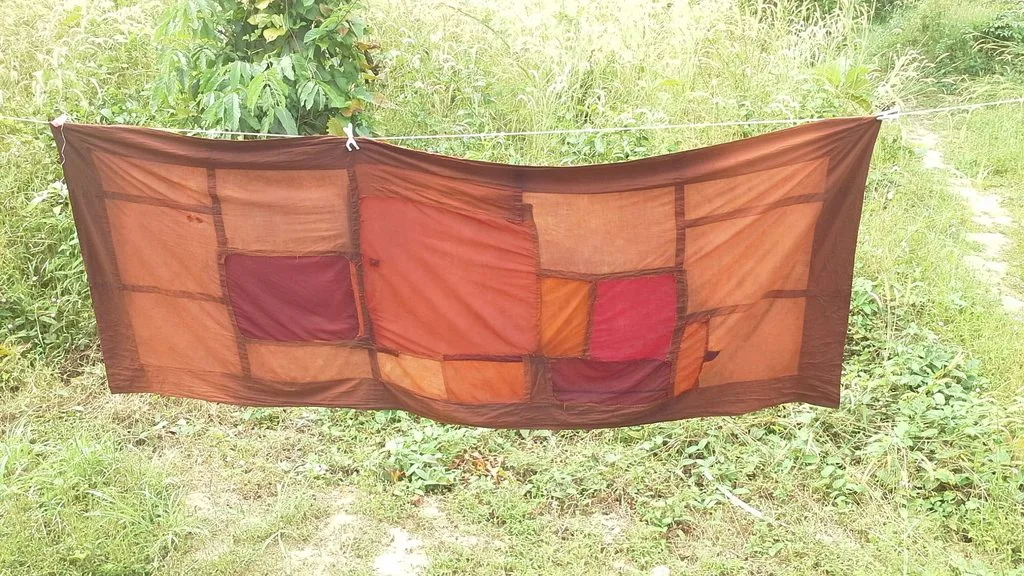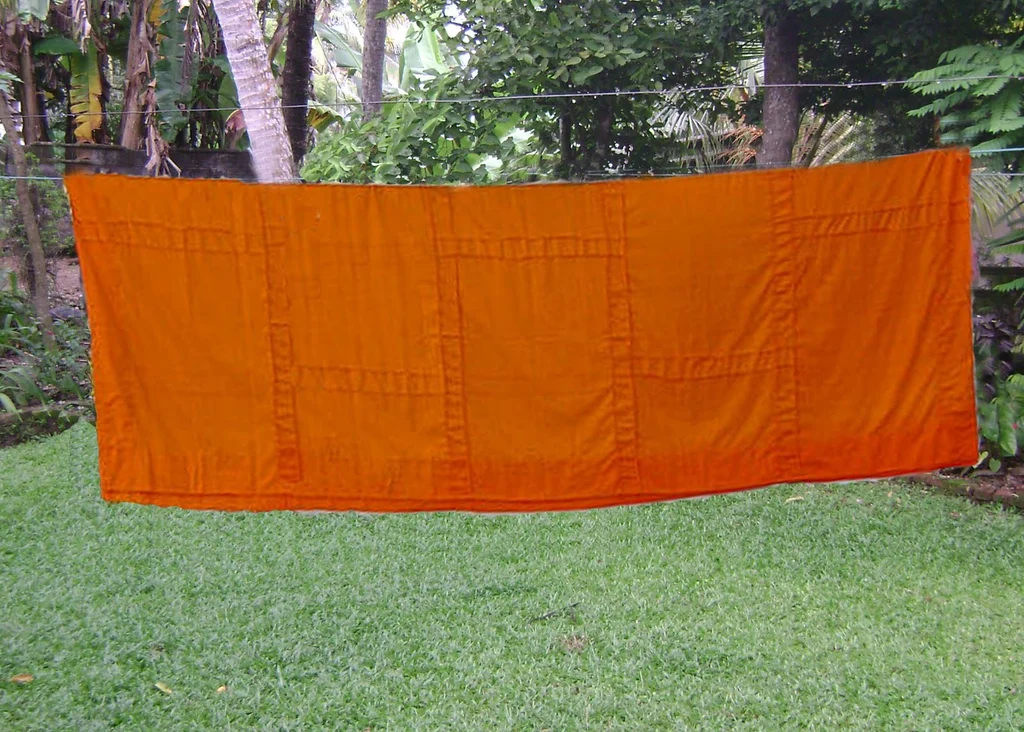Buddhist Monks' Robes Information

Robe Information
Few people realize that the Theravāda monk’s robes are actually a piece of rectangular cloth with no sleeves.1 If you see a Theravāda monk wearing his robes in different styles, then rest assured it is due to the art of “tying the robes” or “rolling the robes” — what I call “robe origami.”
In general, the robe should cover both shoulders and arms (up to the wrists) during the time when the monk is outside his monastery or living area. This is called “wearing full robes.” While you might see monks in South East Asian countries not wearing “full robes” outside of the food collection times, a monk really should wear full robes any time he is outside of the monastery or living space. It is a rule and it is an easy way to distinguish between the monks who care about the pāṭimokkha and those who don’t. Nevertheless, monks who dress properly outside of their monasteries are not always monks who do not touch money, but they at least have some respect for the 227 rules and the pāṭimokkha.

Why are there pictures of me not wearing full robes in Kauai?
I was living in the park and that boundary is considered to be my living area. BTW, that picture was taken the day after the April floods.
A monk usually has a set of three robes: a lower robe, an upper robe, and a double robe. In addition, one can have a bed sheet and a bathing robe, which are often similar to the lower robes, but not always. I also have two inner robes and a sitting cloth, which are accepted as extra cloths within the Vinaya communities and ancient Pāḷi commentaries.
Why do monks’ robes have so many seams?
Theravāda robes have lots of seams and are quite tedious to make. While it would be nice to obtain a queen-sized bed sheet and a twin-sized bed sheet and just throw them on, real robes would never be like that. The monks were once nicknamed “rag-robe wearers.” In the time of the Buddha, and actually not so long ago, cloth was difficult to come by. The width of the cloth was also not very wide and even today is usually limited to 48 inches, although some loom sizes are bigger.
During the time of the Buddha and today, with some selected monks, the monks would collect discarded cloth or rags and sew them together in various patterns. Some monks had fewer seams while others had many. To unify the look and feel of the monks’ robes or uniforms, the Buddha decided to make a rule that all the robes should look like rice paddy fields. The Buddha saw a rice paddy field, commented about how nice it looked, and then made a rule.
Most Vinaya robes usually have at least five long strips sewn together with subdivisions on each strip. It should have a border, and some monks claim that for every number of strips sewn together lengthwise, half of that should be the divisions for each strip. Usually, the number of strips sewn together is an odd number in order to have full and half divisions for each strip.
| Number of Divisions | 5 | 7 | 9 | 11 |
| Number of Subdivisions | 2.5 | 3.5 | 4.5 | 5.5 |
The picture and diagram do not match this chart, but the main thing is that the pattern looks like a rice paddy field.

Lastly, the picture on top is an old robe I had once. It is technically not considered a dhutaṅga (ascetic) robe because the original robe was given to me and not found abandoned or thrown away. I had kept it for about four years and repaired it many times. The original pattern can still be seen on the outermost vertical strips, with two and a half subsections. The design was lost because it was patched as needed along the way. I went through two or more generations of patches in certain areas (like my bottom where I sit). It eventually became a nuisance to me, because a hole larger than a fingernail can cause one to have an offense. So when I first went to Kaua’i in 2015, I started with a fresh set of robes.
While some monks use shirts with sleeves underneath their robes, it is not actually allowed. ↩︎
The robe is folded in half on the clothesline. Picture taken from https://udithawijesena.blogspot.com/2011/07/normal-0-false-false-false-en-us-x-none.html, no copyright is mentioned. ↩︎
Click below to search subjects
